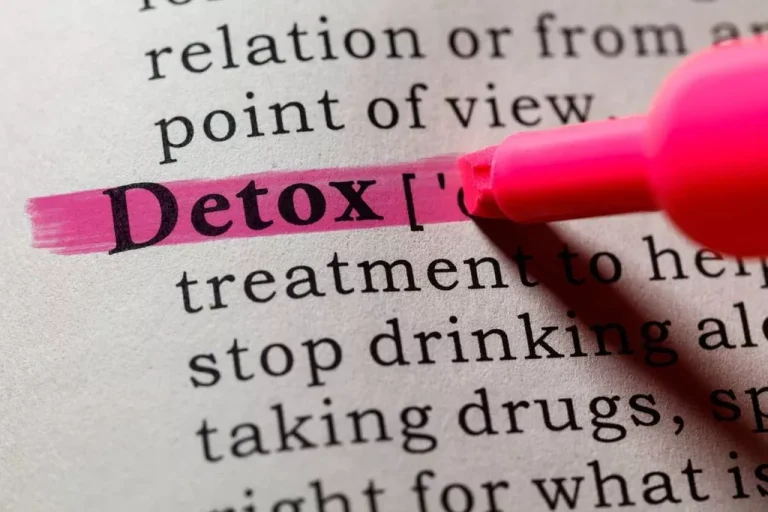
A positive and significant association between hangover frequency and severity was found, which remained significant after correcting for alcohol intake. This finding suggests that hangovers become worse when they are experienced more often. Future research should further investigate this, and factors mediating the observed association, including its implications for alcohol prevention. Finally, there is no validated, reliable assessment scale to determine the vulnerability and sensitivity of alcohol hangover.
What Is Drug Tolerance?
- In some cases, reverse tolerance can be dangerous since it puts individuals at risk of overdose.
- Our team does their best for our readers to help them stay informed about vital healthcare decisions.
- The majority of heavy drinkers will not suffer liver damage and hence will not develop Reverse Tolerance.
- Thankfully, Brandon’s condition was discovered early enough that the holistic and medical treatments he received arrested the damage.
- Fetal alcohol syndrome occurs when an unborn fetus is affected by the mother’s consumption of alcohol.
However, mice that were tested following their 15th drinking session exhibited motor performance that was similar to alcohol-naive mice, indicating the development of chronic tolerance. Recently, Köchling et al. [10] examined the impact of the sequence of consuming beer and wine on hangover severity in 90 participants. Overall hangover severity how to build alcohol tolerance was assessed as a composite score of eight individual items, including thirst, fatigue, headache, dizziness, nausea, stomach ache, tachycardia, and loss of appetite. The intensity of these symptoms was scored on a seven-point scale, with the sum score representing the overall hangover severity ranging from 0 (absent) to 56 (extreme hangover).

Tolerance to Alcohol: A Critical Yet Understudied Factor in Alcohol Addiction
Two definitions of tolerance differentiate drug history versus individual, predrug history. Baseline tolerance defines those initial individual differences in the potency of a drug to produce some effect in a drug-naive subject. That is, drug-naive individuals could be hyporeactive, normoreactive, or hyperreactive to a given drug.
How Alcohol Tolerance Effects The Liver

The presence of activated CD44+ T-cells specific for HIPs was demonstrated in both the spleen and pancreas of NOD mice, however a comparison with the phenotype of these cells in diabetes protected mice is yet to be performed. Importantly, HIP specific T cell clones could be isolated from the islets of deceased human T1D patients indicating that they may play a pathogenic role in clinical disease. The greatly increased potency of the T cell response to the modified insulin peptide compared to the native insulin peptide suggests that these cells had escaped the thymus without undergoing selection against endogenous antigen.
Types of Alcohol Tolerance

Addiction Resource is not a healthcare provider, nor does it claim to offer sound medical advice to anyone. Addiction Resource does not favor or support any specific recovery center, nor do we claim to ensure the quality, validity, or effectiveness of any particular treatment center. No one should assume the information provided on Addiction Resource as authoritative and should always defer to the advice and care provided by a medical doctor. Unlike other forms of alcohol tolerance that develop over time and after numerous drinking sessions, the individual may develop tolerance in a single drinking session.
How Does Reverse Tolerance to Drugs and Alcohol Work?
But for a person who drinks heavily, the body adapts the majority of the time. Eventually, their tissue cells may become dependent on alcohol to function normally. A person with early-stage alcoholism may also exhibit a high tolerance to alcohol.
- However, others have reported experiencing an increased response to THC with prolonged exposure.
- This occurs because the brain works to suppress the production of specific neurotransmitters known as GABA receptors, which are responsible for generating sedation and sleep.
- They may appear normal to those around them, other than the perception that they are drinking more.
- Mice that were exposed to drinking-in-the-dark exhibited motor incoordination during the 8th session but not during the 15th session compared with the mice that drank water only.
- In some cases drug sensitization may also refer to medical interventions (e.g. a drug holiday) that aim to reduce the insensitivity caused by drug tolerance.
- Saying that the dose response to alcohol goes down is exactly the same as saying that alcohol tolerance goes up–and vice versa.
- Khanna et al. (1991b, 1992a, 1992c) tested the effects of different NMDA receptor antagonists on the development of rapid tolerance in male rats in the tilt-plane test.
- People with alcoholic cirrhosis will almost certainly be dependent on alcohol and require medical treatment and a great deal of support.
- Cognitive behavioral therapy helps correct maladaptive learning processes that have developed and contribute to alcohol use.
Motivational Interviewing – MI is a strategy used by clinicians to help the patient with alcohol use disorder see the need for change. When facilitated effectively, motivational interviewing can help the patient move on from the contemplation stage of change into the stages of preparation, action, and maintenance. Thankfully, Brandon’s condition was discovered early enough that the holistic and medical treatments he received arrested the damage.
High Alcohol Tolerance: Is it Possible To Treat It?
However, reverse tolerance to benzodiazepines is not universal and varies among individuals and specific drugs in the class. Behavioral tolerance belongs to a special class of functional tolerance, involving conditioned or learned changes rather than drug receptor changes (see Goudie & Demellweek, 1986). The opponent-process theory https://ecosoberhouse.com/ of drug tolerance (Siegel, 1990) relies on the Pavlovian conditioning model. According to this theory, most drugs appear to have immediate alpha effects (e.g., a decrease in activity), followed by delayedrebound beta effects. The latter are opposite in direction to that of the alpha effect (e.g., an increase in activity).
- Male rats were pretreated with systemic or intra-nucleus accumbens (NAc) injections of naltrexone or vehicle, followed alcohol or saline administration 30 min later.
- There are a number of cell types with regulatory abilities including conventional regulatory T cells (Treg), T helper 3 (Th3) and type 1 regulatory T cells (Tr1).
- The association between drinking variables and the severity and frequency of hangovers.
- Reverse tolerance (i.e., sensitization) is suggested by animal studies and anecdotal reports of persistent paranoid states continuing for weeks to months.
The more alcohol intake you can handle, the more you can mask an alcohol problem. However, it is possible to lose your level of tolerance to alcohol, particularly if you quit drinking. Pretaa is a cutting-edge outcome-based measurement tool designed specifically for addiction and SUD treatment. By combining biometric data monitoring with industry-standard patient assessments, Pretaa offers a comprehensive view of both the mind and body, elevating the standard of recovery treatment. Association between drinking variables and severity and frequency of hangovers. The association between drinking variables and the severity and frequency of hangovers.

Leave a Reply